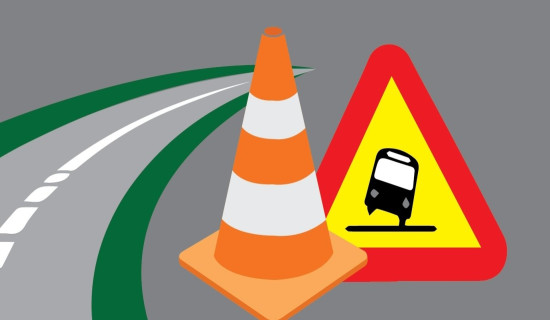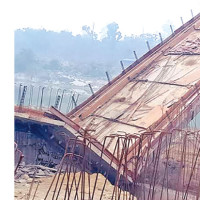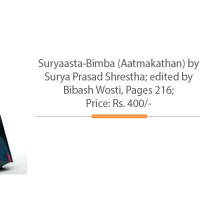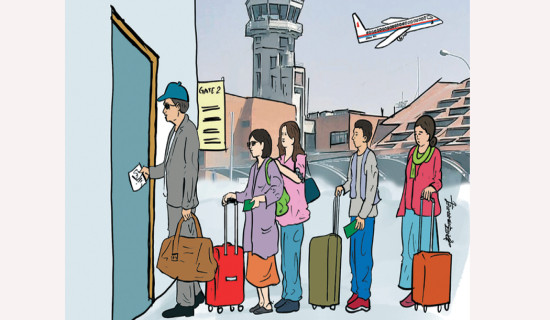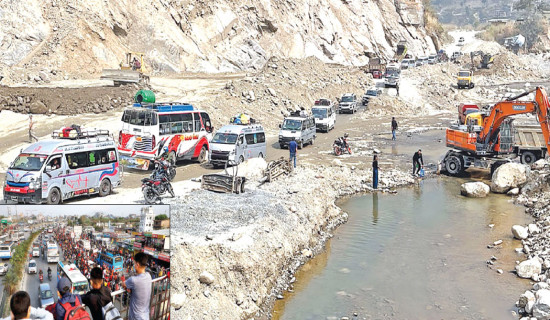- Friday, 21 November 2025
Bill proposes 10-year licence renewal, 18+ age bar for two-wheelers
Kathmandu, Feb. 28: The government is preparing to extend the validity of driving licences to 10 years. The Ministry of Physical Infrastructure and Transport (MoPIT) has proposed this change through the ‘Motor Vehicles and Transport Management Bill-2081,’ which aims to update the existing regulations.
The current Motor Vehicles and Transport Management Act-1993, which has been in place for 31 years, allows a driving licence to be valid for up to five years. However, under the proposed bill, licences will need to be renewed every 10 years. The renewal must be completed within 90 days of the licence’s expiry.
Additionally, the proposed bill mandates that drivers must provide a medical fitness certificate for licence renewal, according to Rajeev Pokharel, Director General for the Department of Transport Management. If a driver is involved in an accident that results in a person's death and a case is filed in court, the driver’s licence will be suspended until the case is resolved. If the court finds the driver guilty, their licence may be revoked.
The bill also introduces new requirements for professional drivers, stating that they must have completed at least grade 8 to obtain a commercial driving licence.
The proposed law also raises the minimum age for driving different types of vehicles. As per the new provisions, for commercial vehicle drivers, they must be at least 23 years of age, at least 21 years old to drive small and medium-sized vehicles (Currently, the requirement for heavy vehicle drivers is 21 years), and must be at least 18 years to drive two-wheelers. (The current law allows 16-year-old to ride two-wheelers.)
Drivers who have reached 60 years of age will no longer be eligible to obtain a licence for large and medium-sized public transport vehicles. However, this restriction will not apply to private vehicle drivers.
The bill also includes new regulations that prohibit individuals from obtaining a driving licence if they have mental health disorders, serious physical disabilities, a history of criminal or anti-social activities, repeated violations of traffic rules and addiction to alcohol or drugs, according to DG Pokhrel. People with epilepsy, dizziness, hearing impairments, or paralysis in one or both hands and legs will also be ineligible for a driving licence.
Professional driving licences
Once the bill becomes law, all current public transport licences will automatically be converted into professional driving licences. Holders of professional licences will be required to undergo annual health check-ups and carry their medical reports.
Furthermore, only licenced individuals will be allowed to operate any vehicle. Vehicle owners will also be prohibited from allowing unlicenced individuals to drive their vehicles. However, an exception will be made for learners, allowing them to drive under supervision as per provincial laws.
Arrangements have been made to provide professional driver’s licences to drivers of large-capacity passenger public transport vehicles. The current law does not have a provision for professional driving licences. The government is also planning to introduce separate behavioural standards for professional drivers.
The Ministry has also made the draft of the new law public for stakeholder feedback. The Ministry plans to move forward with the bill after incorporating suggestions received within 15 days.
According to the draft bill, if someone wishes to operate a commercial vehicle, they must obtain a professional driving licence from the designated authority as per provincial laws.
The Transport Reform Advisory Taskforce recently recommended that to reduce the increasing rate of public transport accidents, the Motor Vehicles and Transport Management Act and regulations should include separate provisions for non-commercial (general) and professional vehicle driver’s licences.
The taskforce also suggested separate systems for issuing and renewing such licences.
The taskforce, in its report, emphasised that professional driving licences should be issued to public transport drivers, while general (non-commercial) driving licences should be provided to other drivers.
The taskforce, led by former secretary Sharad Chandra Paudel, submitted this report to the government last year in the mid-January, 2025.
Regarding public transport, the taskforce recommended that drivers should receive professional driving licences only after undergoing comprehensive training on vehicle structure, operational systems, identifying and maintaining major vehicle faults, practical skills, public transport regulations, passenger interactions, and road conditions.
The taskforce suggested that the validity period of a professional driving licence should be five years, while that of a general driving licence should be ten years.
Currently, the examination system, licensing process, and renewal procedures are the same for both public transport and other types of drivers.
Classification of vehicle licences
The government has also categorised licences and vehicles. According to this classification, licences have been divided into 17 categories.
Under the new policy, the ‘A’ category includes two-wheelers or three-wheelers with a sidecar. These are further divided into three subcategories: L1, L3, and L4, distinguishing between two-wheelers with or without an engine-powered sidecar.
Similarly, two-wheeled scooters and mopeds fall under the ‘AM’ classification, which is also divided into L1, L3, and L4 categories. These vehicles are specifically gearless two-wheelers, with or without an engine-powered sidecar.
Another licence category is ‘A1’, which covers light two-wheelers. This category is also divided into L1, L3, and L4 classes and includes two-wheelers with an engine capacity below 125 cc and power below 11 kW.
Special licence for persons with disabilities
A separate vehicle classification has been designated for persons with disabilities. They are provided with an ‘AV’ category licence, which covers specially designed or modified private two-wheelers, classified as adaptive vehicles (two-wheelers).
Additionally, an ‘AV1’ category licence is assigned for adaptive four-wheelers.
Passenger and cargo vehicles
Likewise, the ‘B’ category licence covers small passenger and cargo vehicles, including M1 and N1 class vehicles, with a maximum weight limit of 3,500 kg.
Further, the ‘B1’ category licence includes L2, L5, L6, and L7 class vehicles, covering three-wheelers with a maximum design speed of over 50 km/h and an electric motor power exceeding 0.5 kW. These vehicles must have symmetrically installed three wheels and an empty weight of up to 350 kg (excluding battery weight for EVs).
For small passenger and cargo vehicles with large trailers, a ‘BE’ category licence is required, which includes M1 and N1 class vehicles.
Medium and heavy cargo vehicles
Similarly, the 'D’ category licences apply to medium and large cargo vehicles (light trailers) and include 'N2' class vehicles. Also, the 'C1’ category licences are for medium cargo vehicles (small) weighing between 3.5 tonnes and 7.5 tonnes, excluding category D vehicles. Further, the ‘CE’ category licences cover medium and heavy cargo vehicles (large trailers), and the C1E’ category licences apply to large medium-duty cargo vehicles.
Classification based on seats
Vehicles are also classified based on seats. Apart from the driver's seat, vehicles with more than eight passenger seats are classified under the 'M2' and 'M3' categories, and are required to have a 'D' category licence.
Similarly, medium and large passenger vehicles are placed under the 'D1' category licence, which includes vehicles with 9 to 16 seats.
Vehicles with a combined weight of the vehicle and trailer not exceeding 12 tonnes are categorised under the 'D1E' licence category. Likewise, fire control vehicles are placed under the 'F' category licence.



